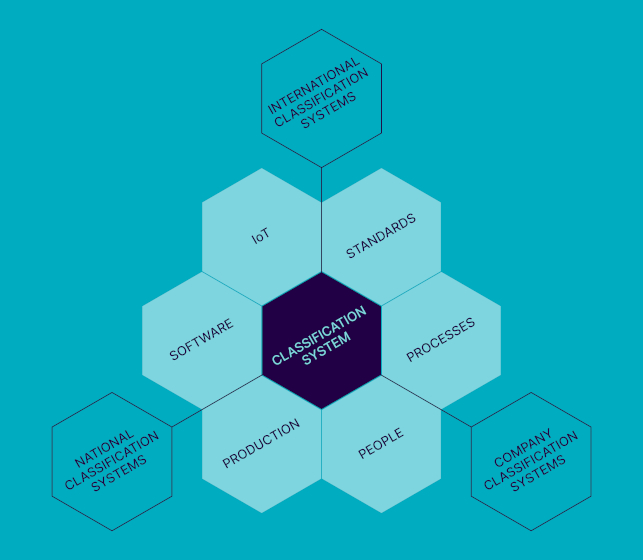Structuring data – classifying it – is key to unlocking the full value of BIM. It’s about clearly communicating design intent in order to more accurately budget, plan and build an asset (and then more efficiently manage it over its lifetime). Without classification, data is easily misunderstood and sometimes just not usable. Well-classified data has increasing value.
In the past, the classification of building information was both less important and more difficult. It cost a lot of time and effort but often yielded little value. That has changed. Classification is becoming ever more important. More valuable. And easier.
Projects today generate more data. And AEC increasingly relies on that data to automate processes, make better decisions and operate devices. Look at all the add-ons for Revit and other platforms, the CNC machines, robots and VR/AR devices. The Internet of Things.
Moreover, the teams that undertake building projects are becoming more complex. Architects and engineers are creating models for use by cost estimators, consultants, contractors, fabricators and so on in multiple other organizations and countries.

In each case, all the actors – people, software, equipment – need a common language, an agreed-upon data structure. It could be international standards. Or national classification systems. Or custom ones. That depends on the project. But if BIM managers don’t decide on classifications and model creators don’t implement them, everyone suffers. In fact, today many projects do suffer from mistakes and delays due to a lack of classification. Instead of a valuable “common data environment” they have a costly “chaotic data environment”.
We’re talking about effective data exchange. Harmonization. Interoperability.
So what’s the value created by classifying BIM data?
- Clarity: Project participants can quickly find and understand the data they need
- Integration: Systems, machines, devices can automatically access and process data
- Efficiency: Owners can aggregate costs, other data in multi-asset management tools
- Competition: Public and private procurement become more open and transparent
In terms of the falling costs of classifying data, classification management tools are now emerging that really do simplify life. That’s why a classification engine – BIMAXON ICS – was developed in our company. This secure cloud-based software-as-a-service solution organizes data according to international, national and company-level classification standards, with pass-through to Autodesk® Civil 3D®, Navisworks®, Revit®, Tekla® at present, and potentially any other system in the future.
Want to see with your own eyes how easy the BIM data classification workflow is?
Watch the webinar recording







